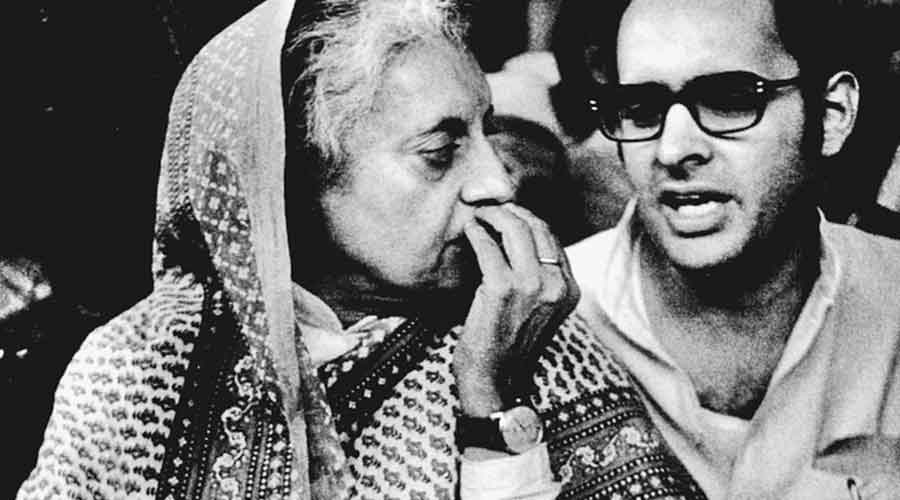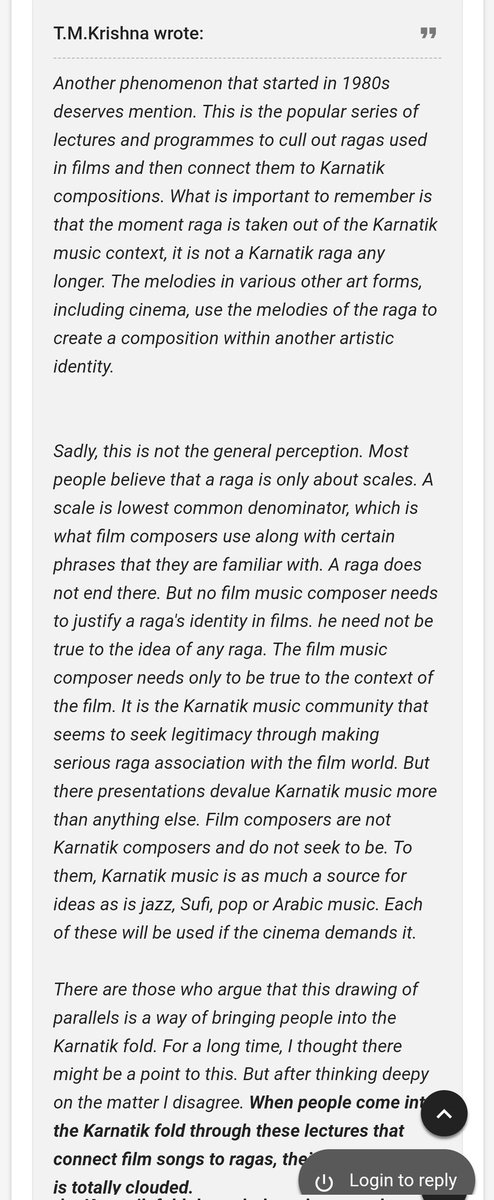🧵1/30 — Opening: India’s NOTAMs, Pakistan’s short mirror NOTAM, and firing/autonomy trials off Karwar form a coherent multi-domain posture over 24 Oct –10 Nov 2025. This is not routine training. It’s a calibrated readiness and signalling campaign. 
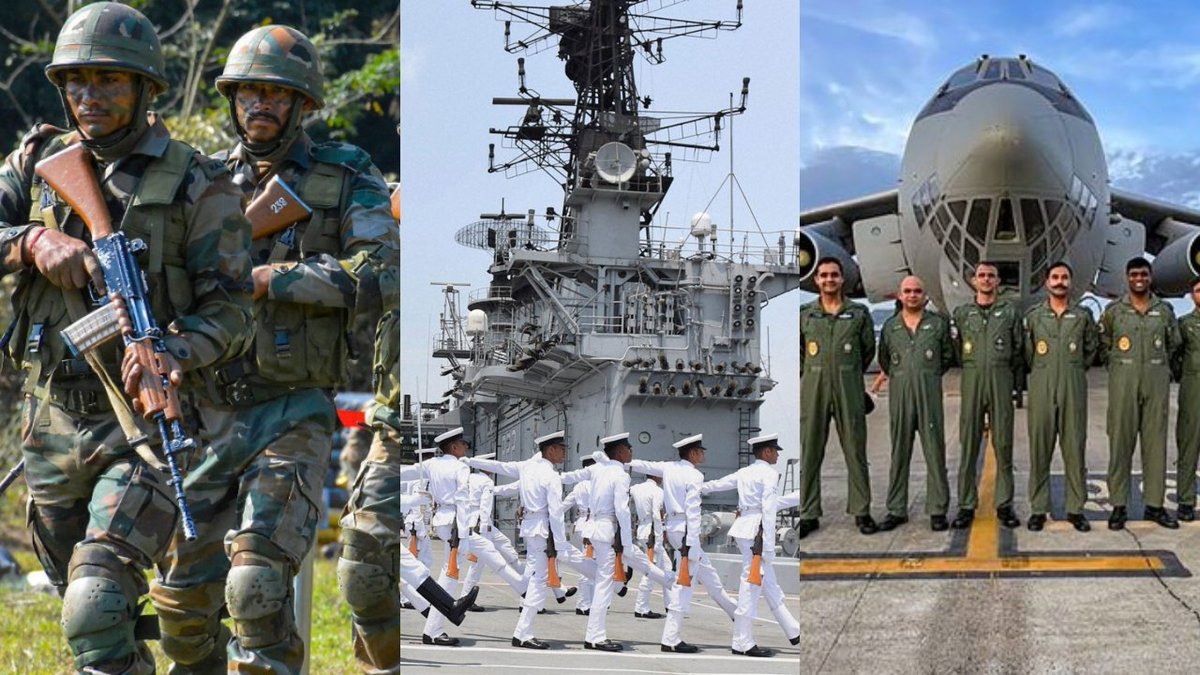
2/30 — Baseline: NOTAM = legal closure of air/sea lanes for safety. But scale + sequencing matter. A 12-day tri-service NOTAM up to 28k ft + short Pakistani NOTAMs + pre-exercise naval firing = a layered, deliberate tempo of ops & signals. 
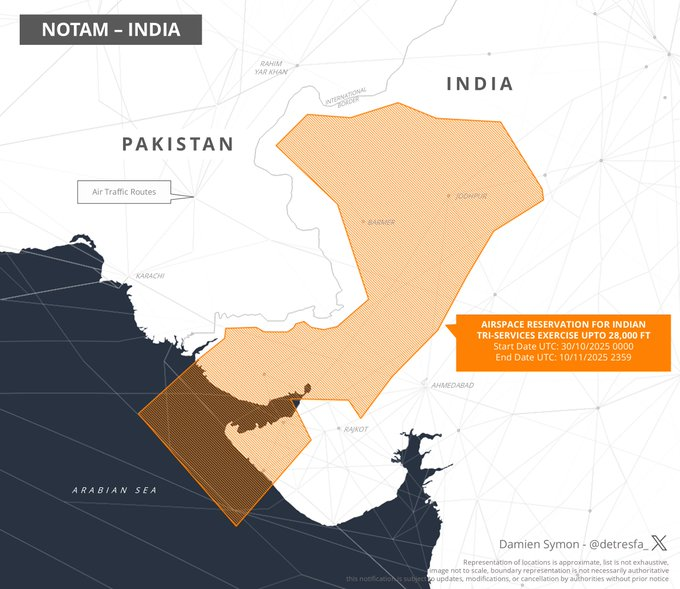
3/30 — Historic context: Think Brasstacks (1986–87). Massive exercises can be read as offensive mobilization. The Brasstacks lesson: exercises create perception risk under nuclear overhang. This shapes both Indian planning and Pakistani responses now. 
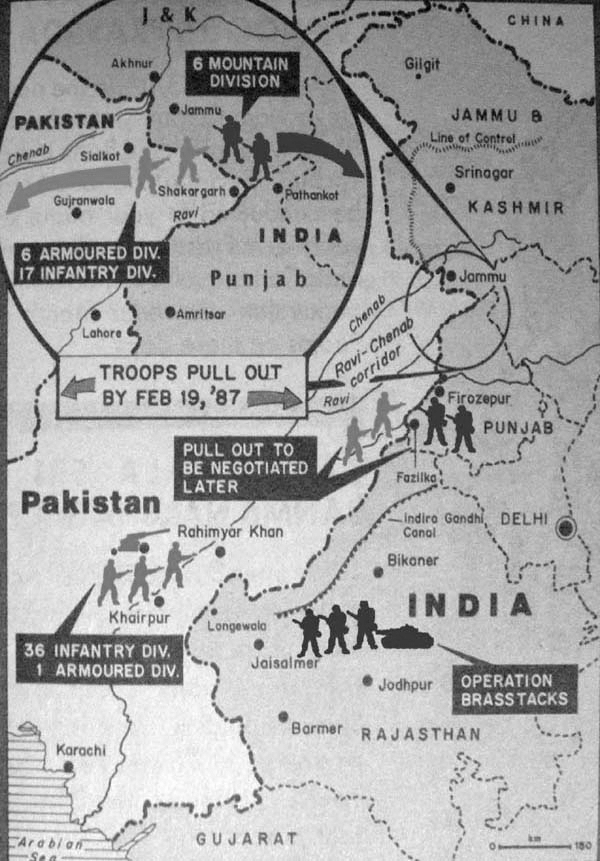
4/30 — Sequence: INDIA — autonomous trials (Karwar), naval live-fire ranges (Arabian Sea), then tri-service NOTAM (west). PAKISTAN — 24–48 hr short NOTAMs across Karachi/Sindh. Pattern = India validates tech & force; Pakistan tests quick reaction/deterrence. 

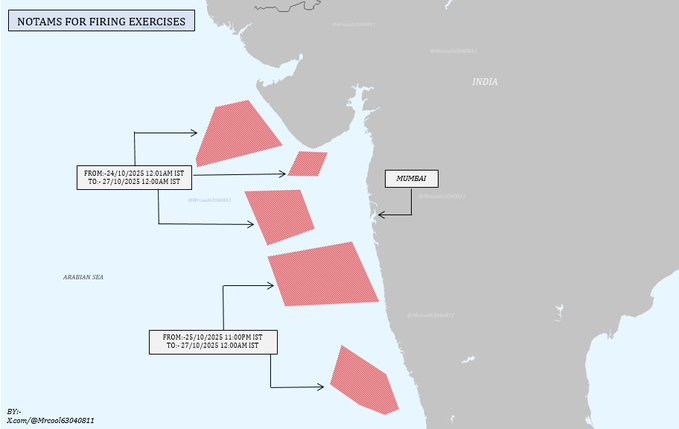
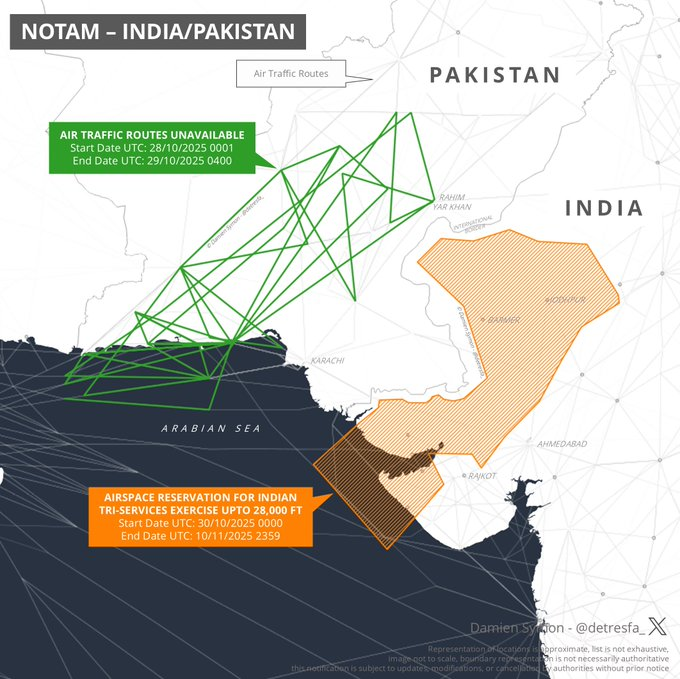
5/30 — Geographic calculus: NOTAM geometry suggests two focal axes: (A) Sir Creek–Kutch–Gujarat littoral and (B) Arabian Sea deep-water firing belts off Mumbai/Karwar. These enable littoral denial + stand-off strike rehearsals simultaneously.
6/30 — Sir Creek significance: Legal baseline → EEZ & continental shelf calculation; tactical littoral environment for fast boats, MARCOS, USVs/AUVs. Control yields economic (hydrocarbons) and operational leverage without deep inland penetration. 
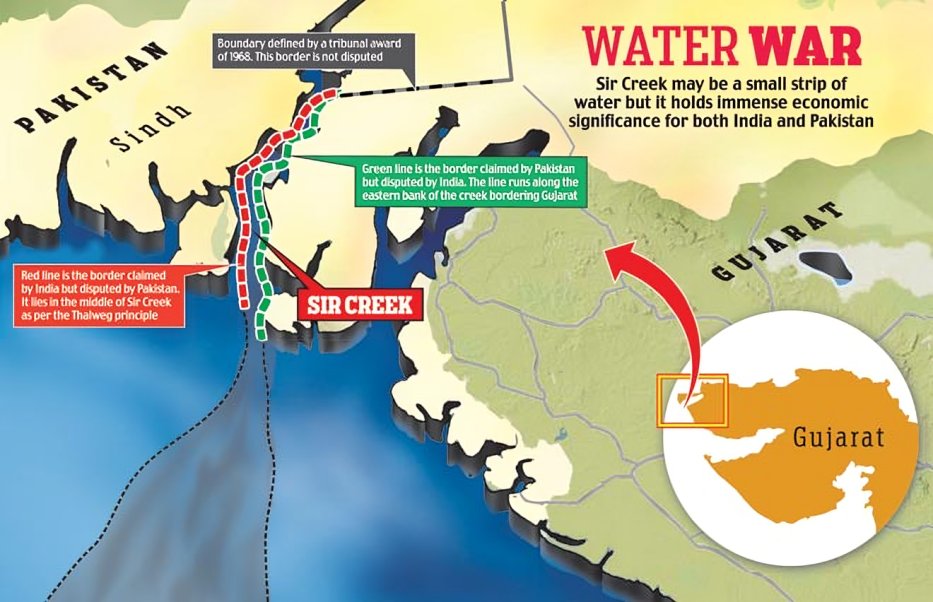
7/30 — Operational character of Sir Creek: shallow, maze-like channels; unsuitable for amphibious armour. Ideal for special forces, small boat raids, seabed/shoreline sabotage, and denying littoral approach — not for heavy conventional seizure.
8/30 — Karachi risk calculus: Capturing Karachi requires sea control, air superiority, sustained logistics & urban forces. Practically infeasible in short window; more likely Indian "options to test" are blockade, surgical strikes, sabotage, ISR-led denials — not occupation.
9/30 — Autonomous & unmanned factor: Karwar trials signal possible ISRO/DRDO/IN integration of USVs/AUVs and C2 links. Unmanned systems multiply ISR and target acquisition, complicate Pakistani coastal defence and enable distributed, deniable effects. 
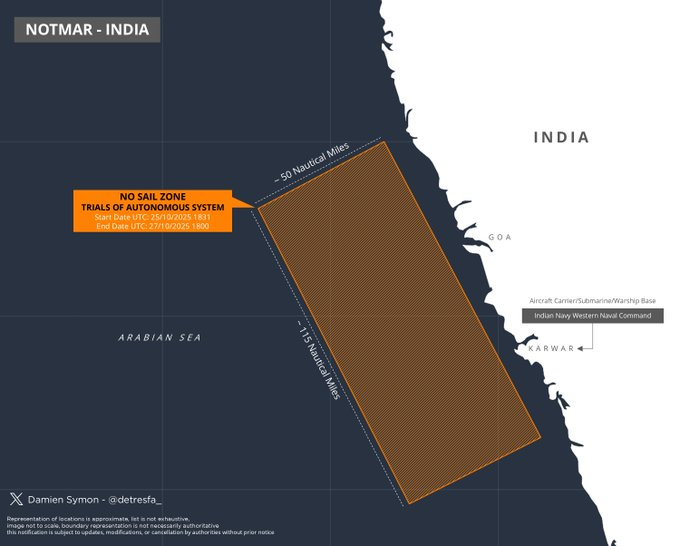
10/30 — Naval firing belts off Mumbai: live shipborne gunnery & missile ranges validate intercept & anti-ship engagements; also used to calibrate maritime strike packages and joint air–nav warfighting in EM-contested environment.
11/30 — Diversion thesis: India can fix Pakistan’s attention east/south with visible tri-service moves while facilitating pressure in the west (Balochistan/Afghan border) via proxies/ISR or permissive Afghan actors. Classic fix-and-strike logic.
12/30 — Afghan angle: Taliban–TTP friction already strains Pakistan’s western flank. Indian intelligence or a permissive Afghan posture could increase pressure on Pakistan without overt Indian boots on the ground — deniable, asymmetric leverage.
13/30 — Balochistan vector: insurgent activity and sabotage (IEDs, attacks on convoys) erode Pakistan’s peripheral control. If Pakistan must reallocate reserves to the east, Baloch pressure compounds, forcing difficult resource choices. The 10-day window will be interesting.
14/30 — Pakistan’s missile test gambit: short NOTAMs over the Arabian Sea often accompany Babur/Shaheen validation launches. A missile splash-down reassurance test is credible — a low-cost, high-visibility deterrent to signal second-tier escalation capability.
15/30 — Pakistan’s strategic calculus: mirror NOTAMs and missile tests send a calibrated message; “we can match escalation”, while avoiding protracted mobilisation costs. It’s deterrence via tech signalling, not mass force projection.
An "Inexpensive, limited deterrent".
An "Inexpensive, limited deterrent".
16/30 — Saudi pact & force stretch: Pakistan-Saudi defence pact creates potential overseas commitments. Any deployment to Saudi Arabia reduces immediate domestic reserves. However, Islamabad will hedge — key Western units will remain to counter India.
17/30 — International dimension: US-India warming and China-Pakistan ties create triangular diplomacy. US likely to urge restraint; China may offer diplomatic/economic cover. Neither will likely militarily intervene openly in a limited India-Pakistan episode.
18/30 — Escalation ladder (likely):
(1) Signals/NOTAMs → (2) localised strikes/sabotage/ISR ops → (3) limited maritime interdiction/missile tests → (4) conventional exchanges → (5) crisis diplomacy.
Nuclear threshold remains a strategic latent constraint.
(1) Signals/NOTAMs → (2) localised strikes/sabotage/ISR ops → (3) limited maritime interdiction/missile tests → (4) conventional exchanges → (5) crisis diplomacy.
Nuclear threshold remains a strategic latent constraint.
19/30 — Risks: misidentification in littoral zones, collision between unmanned assets & manned platforms, inadvertent escalation from proxy blowback, and economic fallout via disrupted shipping/insurance spikes. Pretty remote in terms of probabilities of these happening.
20/30 — Pakistan’s options: quick regional mirroring (NOTAMs), mobilise fast reaction air assets, submarine/ASW posture off Karachi, asymmetric strikes via proxies, diplomatic escalation to China/Saudi/US, seek economic/political support to absorb pressure, IF any escalations.
21/30 — India’s plausible options:
A) Lawful presence & EEZ assertion via surveys & patrols (low risk)
B) Joint littoral denial drills + MARCOS raids for navigation aids (med risk)
A) Lawful presence & EEZ assertion via surveys & patrols (low risk)
B) Joint littoral denial drills + MARCOS raids for navigation aids (med risk)
21/30 (Part II)
C) Precision maritime strikes on PN assets/fuel depots (higher risk) D) Covert ISR & proxy enablement in Balochistan (deniable, political risk) E) Full strike packages — costly & escalatory.
C) Precision maritime strikes on PN assets/fuel depots (higher risk) D) Covert ISR & proxy enablement in Balochistan (deniable, political risk) E) Full strike packages — costly & escalatory.
22/30 — Operational art for India: favour layered attrition + legal cover. Combine visible force posture (NOTAMs, fleet presence) with covert ISR, autonomous sensor webs, and targeted, time-boxed kinetic effects to deny Pakistan advantage while managing escalation.
23/30 — C2 & EM resilience: India’s autonomous integrations must be hardened for GPS/comms denial. Pakistan will attempt EW & SIGINT to disrupt data links. Successful joint ops hinge on redundant comms, EW hardening, and pre-established maritime deconfliction.
23/30 (part II)
C2 - > Command and Control
EM - > Electromagnetic Resilience
India’s trials off Karwar may explicitly test:
1. How autonomous ships/underwater drones behave if they lose satellite link.
2. Whether they can switch to alternative data channels or onboard AI control.
3. How can Naval HQ re-establish contact and integrate data securely?
C2 - > Command and Control
EM - > Electromagnetic Resilience
India’s trials off Karwar may explicitly test:
1. How autonomous ships/underwater drones behave if they lose satellite link.
2. Whether they can switch to alternative data channels or onboard AI control.
3. How can Naval HQ re-establish contact and integrate data securely?
24/30 — Deconfliction: immediate hotlines, maritime deconfliction channels (IMO/Navarea warnings jointly shared), and military-to-military updates reduce miscalc. Both sides will be on alert. Diplomatic backchannels (US/Chn facilitation) can be force multipliers during a crisis.
25/30 — Economics: Prolonged maritime/airspace disruptions inflate shipping insurance, affect Gulf–India routes, and disrupt regional trade. Operational gains must be weighed against economic costs to Indian ports/industry. India's think tank must have done all this.
26/30 — Messaging & lawfare: India can pair hard power with lawfare — UNCLOS technical submissions, accelerated bids for offshore blocks, and publicised maritime patrols to create legal faits accomplis and shape global opinion.
27/30 — Intelligence indicators to watch (high value): sustainment convoys in Balochistan, MARCOS deployments, submarine transits from Karachi, airbase sortie rates in Sindh, unmanned system ops off Karwar, and sudden coastal survey notifications.
28/30 — Recommended posture for India (prudence): calibrate visible deterrence with robust ISR, avoid single large thrusts that invite proportional Pakistani asymmetric response, prioritize legal/economic levers, and keep crisis lines open to prevent spirals.
29/30 — For Pakistani planners: retain strategic reserves for western theatre even while demonstrating deterrent capability elsewhere; prioritize ASW/port defence and coastal ISR; engage partners diplomatically to expand crisis space.
30/30 — Conclusion: This is multi-domain choreography by India — signaling, tech validation, and operational rehearsal combined. Neither side wants general war; but the margin for miscalculation is narrow.
My PoV: Follow tempo and strategic gains, not rhetoric.
End of 🧵
My PoV: Follow tempo and strategic gains, not rhetoric.
End of 🧵
• • •
Missing some Tweet in this thread? You can try to
force a refresh










